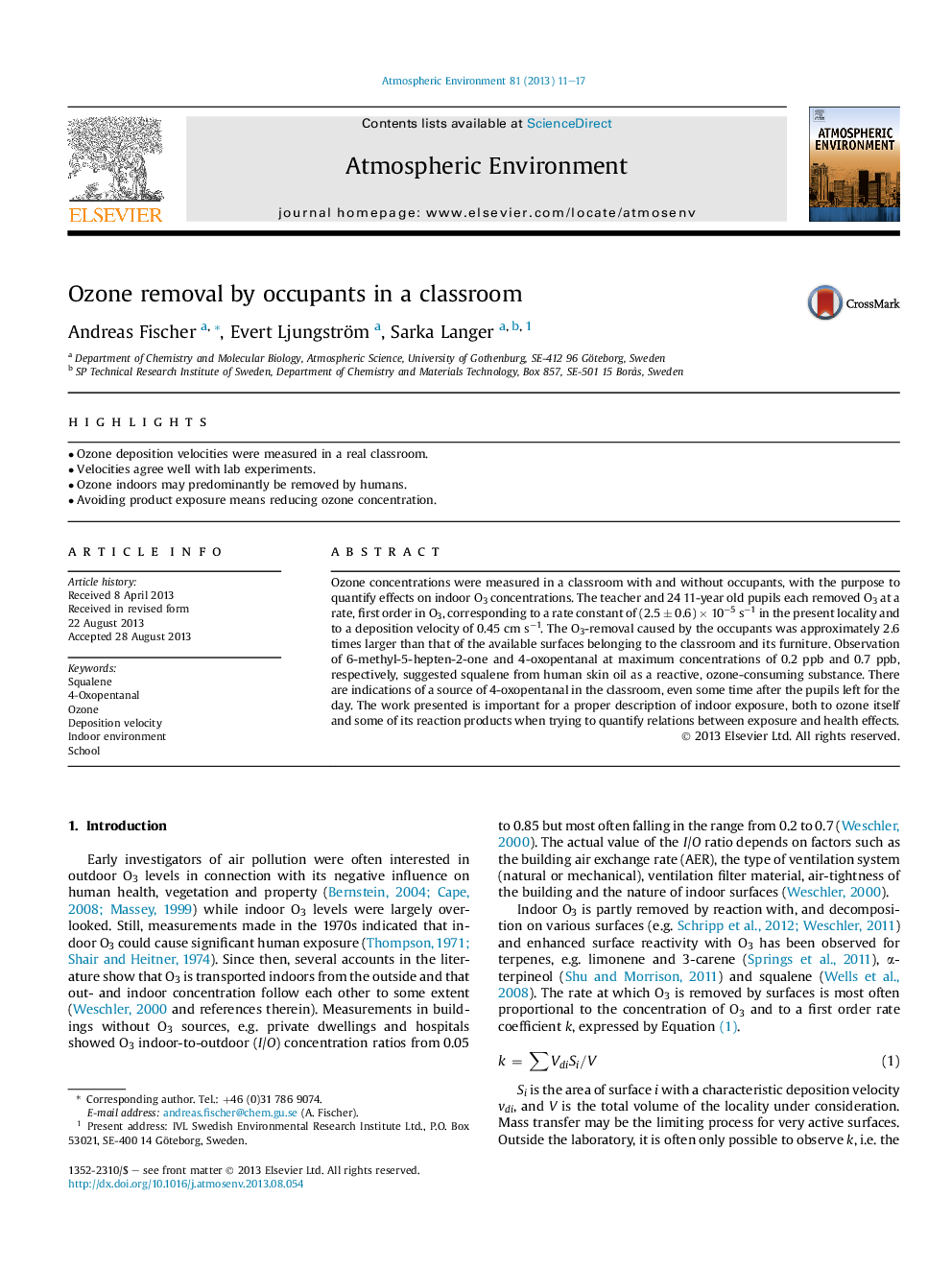| Article ID | Journal | Published Year | Pages | File Type |
|---|---|---|---|---|
| 6340373 | Atmospheric Environment | 2013 | 7 Pages |
Abstract
Ozone concentrations were measured in a classroom with and without occupants, with the purpose to quantify effects on indoor O3 concentrations. The teacher and 24 11-year old pupils each removed O3 at a rate, first order in O3, corresponding to a rate constant of (2.5 ± 0.6) Ã 10â5 sâ1 in the present locality and to a deposition velocity of 0.45 cm sâ1. The O3-removal caused by the occupants was approximately 2.6 times larger than that of the available surfaces belonging to the classroom and its furniture. Observation of 6-methyl-5-hepten-2-one and 4-oxopentanal at maximum concentrations of 0.2 ppb and 0.7 ppb, respectively, suggested squalene from human skin oil as a reactive, ozone-consuming substance. There are indications of a source of 4-oxopentanal in the classroom, even some time after the pupils left for the day. The work presented is important for a proper description of indoor exposure, both to ozone itself and some of its reaction products when trying to quantify relations between exposure and health effects.
Related Topics
Physical Sciences and Engineering
Earth and Planetary Sciences
Atmospheric Science
Authors
Andreas Fischer, Evert Ljungström, Sarka Langer,
